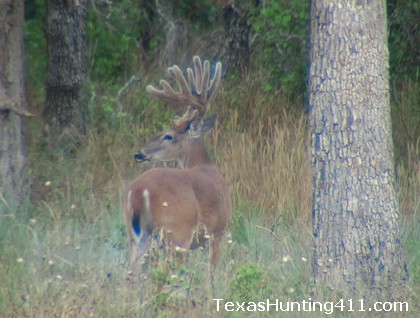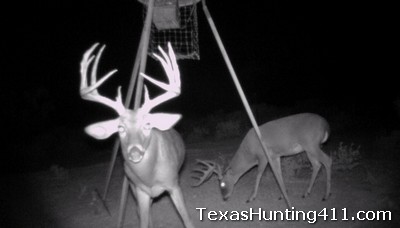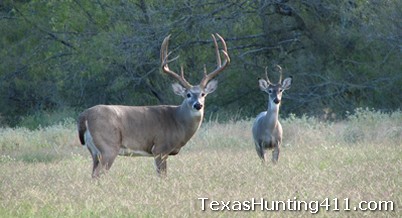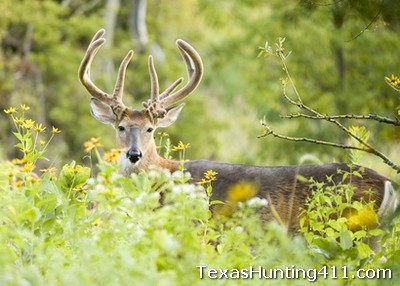White-tailed deer in Texas have become a big business. Simply stated, big whitetail bucks can be turned into big bucks in the pockets of those that sell them. As with anything that involves money, someone was bound to get caught abusing the system. After a lengthy four year investigation a 77-year-old Cherokee County, Texas licensed deer breeder has pleaded guilty to smuggling deer in the Eastern District of Texas and then lying about it to a U.S. Fish and Wildlife agent, announced U.S. Attorney John M. Bales.
Whitetail breeder Billy Powell pleaded guilty on June 14, 2011, to the felony offense of smuggling at least 37 whitetail deer, over a 3 year time span, from Indiana, Illinois, and Ohio into Texas in violation of state and federal laws. Powell also admitted that he made a false statement and submitted a false document to a U.S. Fish and Wildlife special agent who was looking into the matter. Powell has agreed to pay a $1 million fine, to be deposited into the U.S. Fish and Wildlife Lacy Act Reward Fund, as well as $500,000.00 in restitution to Texas Parks and Wildlife, on his sentencing date.
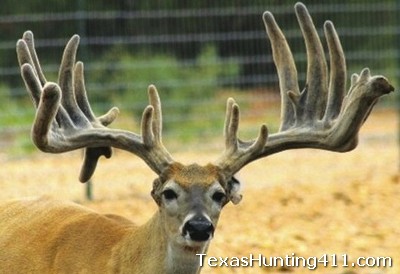
Powell’s agreement with the government calls for Powell to serve 3 years probation with six months of home confinement which will be monitored with an electric anklet. During the term of probation, Powell will be prohibited from participating in any manner in commercial deer breeding. Additionally, Powell must forfeit any illegally imported deer, any progeny of those deer, and any biological material derived from said deer, which would include any semen, antlers, mounts, and cloned deer. Powell has already forfeited over 1,300 straws of frozen semen valued at approximately $961,500.00 to U.S. Fish and Wildlife.
According to information presented in court, on at least four separate occasions, spanning from October 2006 through June 2008, Powell knowingly imported at least 37 live whitetail deer, many of whom came from captive deer farms in Ligonier, Indiana, into the state of Texas and to his “5-P Farms”, high fenced deer breeding facility in Cherokee County Texas. These deer included bucks known as “Fat Boy” aka “Barry”, “Silver Storm” aka “Hit Man”, “Y 009″, “Eagle Storm” aka “BJ”, “Thunderstruck”, “High Five”, and “Primer” aka “Spikes”.
At all times Powell knew that Texas law prohibited any person from possessing a deer acquired from an out-of-state source. In spite of this, Powell agreed to participate in the above-described transactions in which whitetail deer would be secretly transported from Illinois, Indiana, and/or Pennsylvania, to Texas in order to evade Texas laws and regulations.
Powell acknowledged that the fair market value of all of the illegally imported, whitetail deer exceeded approximately $800,000.00, that the value of the illegally accumulated white-tailed deer semen exceeded approximately $961,000.00, and that the value of the progeny exceeded approximately $290,000.00.
Powell further admitted that he lied to a U.S. Fish and Wildlife Special Agent during a voluntary statement at the U.S. Attorney’s Office in Tyler, Texas. Powell told the agent that he had illegally imported approximately 35 white-tailed deer into the state of Texas when in fact he knew that he had illegally imported no less than 41 white-tailed deer, including 6 white-tail deer fawns.
Findings of the investigation also prompted the Wildlife Division of Texas Parks and Wildlife Department to conduct an epidemiological investigation in consultation with veterinarians and wildlife disease experts from Texas Animal Health Commission, Texas Department of State Health Services, and Texas A&M College of Veterinary Medicine and accredited veterinarians actively involved in the deer breeding industry. This process was carried out in three separate phases.
Ultimately all 334 deer contained in Powell’s deer breeding facility were euthanized to facilitate testing for chronic wasting disease (CWD) and bovine tuberculosis (TB). This process was necessary in order to provide an acceptable level of assurance that neither disease was prevalent in Powell’s deer breeding facility nor in any deer breeding facility that had received deer from Powell’s facility since October 2004.
Introduction of these diseases into Texas could have a detrimental impact on the longtime cultural tradition of deer hunting, which generates an estimated $1.2 billion in retail sales and has a total economic output of more than $2 billion in Texas each year. Disease monitoring is also necessary to protect legal deer breeding activity from risk of disease exposure. Furthermore, bovine tuberculosis could have a significant impact on the Texas livestock industry.
Since no live-animal test for CWD exists, TPWD consulted with trained experts to ensure the most humane euthanasia method and treatment of the animals was used. Many deer breeders in Texas do not agree with killing deer for testing, but there is no other way. Texas Parks and Wildlife officials are presently awaiting the test results for the tissue samples submitted to the Texas Veterinarian Medical Diagnostic Laboratory located in College Station, Texas.
This whitetail deer smuggling-transport case was investigated by the Special Operations Unit of the Texas Parks and Wildlife and U.S. Fish and Wildlife Service. It’s a shame that these deer had to be put-down, but it’s all because one guy broke the law. These laws are in place to protect people, livestock and the natural resources that are important to all hunters, as well as non-hunters. CWD and TB are no joke, but as the numbers in this case suggest, deer are worth big money. Hopefully the countless others that are bound to be out there smuggling, doing the exact same thing as this guy, will get the message.
